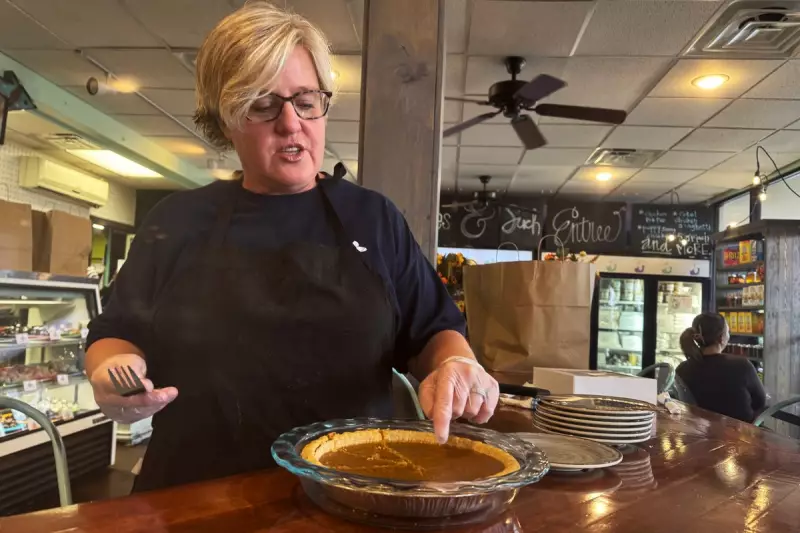
As families across America prepare for Thanksgiving, a delicious debate simmers beneath the festive surface: which dessert truly deserves pride of place on the holiday table - sweet potato or pumpkin pie?
The Great Pie Divide
Both desserts share striking similarities - they're round, orange, and likely not the healthiest option. Yet for most Americans, the preference comes down to geography and heritage. The two Thanksgiving favourites actually share common ancestry in European carrot pie, explaining their comparable colour, taste and texture.
At Sugar Magnolia Takery in Flowood, Mississippi, customers display clear loyalties. "Pumpkin," declared Lori Robinson, a regular customer. "My mom cooks it every Thanksgiving, Christmas, every time. It's way better than sweet potato." Unlike some local bakeries, this establishment produces both varieties.
Owner Elizabeth Arnold notes the key distinction lies in spicing. "Sweet potato is sweeter, made with white and brown sugar. Pumpkin pie is less sweet and spicier," she explained. Another patron, Xavier Pittman, countered firmly: "Sweet potato pie. All day." Arnold confirms that in her southern bakery, sweet potato consistently outsells pumpkin.
Cultural Roots and Regional Preferences
This southern preference comes as no surprise to culinary expert Adrian Miller, known as the "Soul Food Scholar." He explains that sweet potato pie holds particular significance in the South, where the vegetable has deep connections to the region's culture, economy and painful history of slavery.
"If there were to be a Mount Rushmore of soul food desserts, sweet potato pie would definitely be there," Miller stated. Meanwhile, pumpkin pie, while universally available, maintains stronger associations with northern states.
The general perception suggests pumpkin pie appeals more to white northerners while sweet potato pie remains a favourite among Black southerners. However, culinary historian Michael W. Twitty argues the reality proves more nuanced. With both desserts deeply embedded in American tradition, the pie preference often reflects personal identity.
"We can have fun with good-natured ribbing between regions and cultures," Twitty said. "At the same time, don't let it get too serious to the point where it's like hard, fast markers of who you are, who I am, who we are."
Historical Context and Modern Traditions
Twitty, raised in Washington D.C. with family roots stretching back to the 17th century South, recalls childhood Thanksgivings where "everybody would always bring like two homemade sweet potato pies."
The connection between sweet potatoes and southern Black culture originated during slavery, when the vegetable provided a staple food source for enslaved people. Its similarity to yams and cassava from African cuisine made it accessible and familiar. Enslaved Africans are credited with perfecting the sweet potato pie recipe, though Europeans first attempted similar creations.
Some believe the abolitionist movement's boycott of goods produced by enslaved people limited sweet potato pie's popularity in the North. Twitty suggests a simpler explanation: availability. While both vegetables grew readily in the South, northerners had limited access to the orange sweet potatoes common today, instead encountering white-fleshed varieties with mealier textures.
With sweet potatoes less accessible in northern regions, pumpkin naturally dominated. The tradition of pumpkin pie dates back centuries to the colonial period, with a recipe appearing in Amelia Simmons' 1796 cookbook - the first published in the United States.
Despite these culinary divisions, both Miller and Twitty acknowledge many communities defy stereotypes. Miller, despite his southern heritage, enjoyed both pies during Thanksgiving celebrations. "There will also be somebody, every single day, every single year who will break the rules," Twitty remarked, highlighting how personal taste often transcends regional expectations in modern America.





